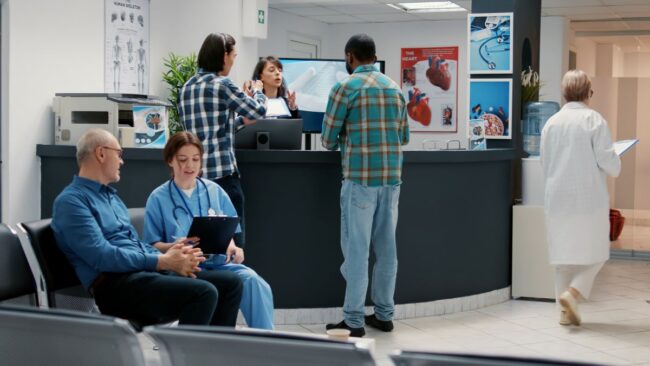The Changing Landscape of Telemedicine Amid COVID-19
Telehealth is here to stay. COVID-19 has changed the way patients access healthcare, with a new emphasis on the use of telemedicine. In the midst of a pandemic, it makes sense that providers would prefer to see patients from a distance whenever possible. However, while COVID-19 accelerated and expanded the rate at which providers adapted to offering telehealth services, trends show telemedicine is not going anywhere in the wake of COVID-19.
With that in mind, InfoWorks explored the changing landscape of telemedicine with a three-part blog series. This first part surveys the challenges patients, providers, and hospitals are currently experiencing and some innovative examples of organizations rising to meet those challenges. Moreover, we look at the benefits and risks of being thrown into the deep end with telehealth while the world of healthcare tries to adapt to life in a pandemic.
Challenges
- Healthcare providers all over the world are facing the same problem. How do you suddenly shift a large volume of care to telemedecine? One of the biggest challenges of COVID-19 for healthcare providers is the sudden need for a large volume of telehealth visits. To handle this, Stanford Children’s Health, one of the top children’s hospitals in the US, is using a multi-faceted approach. They have had to increase their network bandwidth and software licenses, improved online training course videos and materials, and shifted some employees to do telehealth technical support for both providers and patients. In Illinois, OSF HealthCare has integrated an AI chatbot to screen patients and direct them to the right resources before they talk to a provider.
- Another challenge is reaching rural patients and those without access to sufficient technology. Dr. Adams at East Alabama Medical Center says about 80% of his patients cannot do video calls.
- The aspect providers and hospitals don’t want to have to think about, but have no choice but to consider is how they will be able to bill for telemedicine. The pandemic-influenced allowances for providers to bill telehealth visits the same as in-person aren’t expected to continue. Providers are now having to weigh the benefits of telemedicine with the potential lower payout for their time. For now, it remains a waiting game as insurers and legislators remain up in the air on telemedicine.
With so many hospitals and providers having to find creative solutions to these issues it will surely breed innovation in the future.
Benefits
- Could this be the push needed for the industry to embrace telehealth even more in the future? Many people are using telehealth that have never used it before and are seeing unexpected benefits. Pediatricians at Stanford’s Children’s Health are getting better information than they do during in-person visits because they are seeing a child in their home environment doing their natural routine. A Pulmonologist can observe an obstructive sleep apnea patient asleep in their own bed. Providers are getting to see a whole different aspect of their patients that they don’t normally see in a visit setting.
- Patients and providers are reporting more flexibility in scheduling and access to a wider population due to the decreased travel time and reduced need for proximity.
All of this is exciting news and healthcare professionals will continue to capitalize on these benefits of telehealth long after the pandemic is over.
Risks
- Personal health information is private and sensitive. The shift to telemedicine needs to consider ways to ensure patients can confidently share health data over telehealth platforms.
- Misdiagnosis due to the virtual nature of telemedicine remains a risk providers need to be aware of. Misdiagnosis can lead to incorrect prescriptions and ineffective treatments. As always, a misdiagnosis can increase the cost to both the patient and the system as a whole. The data about such aspects of telemedicine needs to be gathered and closely monitored in the coming months to determine if the risk is higher than an in-person visit.
- There can also be a risk of a lack of control over the collection, use and sharing of this health data. People may be more willing to accept privacy risks when they perceive that the benefits of telehealth outweigh the risks in sharing their information.
As with anything in life, risks are unavoidable. The existence of risks from the adoption of telemedicine do not mean providers shouldn’t embrace it as a key tool of their future. The risks simply need to be monitored and addressed.
Telemedecine is not without its challenges and risks, but the benefits to patients and providers are leading to more and more virtual visits. Check back with the InfoWorks blog for more on telehealth: how the future of telemedicine might unfold and how patients can get involved.




